Abstract
The binding of chloramphenicol to intracellular components of intact cells was measured by procedures based on a silicone-wash technique. The number of stereospecifically bound molecules of chloramphenicol increased with external concentration to a saturation value equal to the number of ribosomes per cell. Chloramphenicol is therefore believed to be attached stereospecifically by a weak bond, most probably to a single site on the 50S ribosome. This bond was found to be temperature-dependent and appeared to be responsible for inhibition of protein synthesis.
Full text
PDF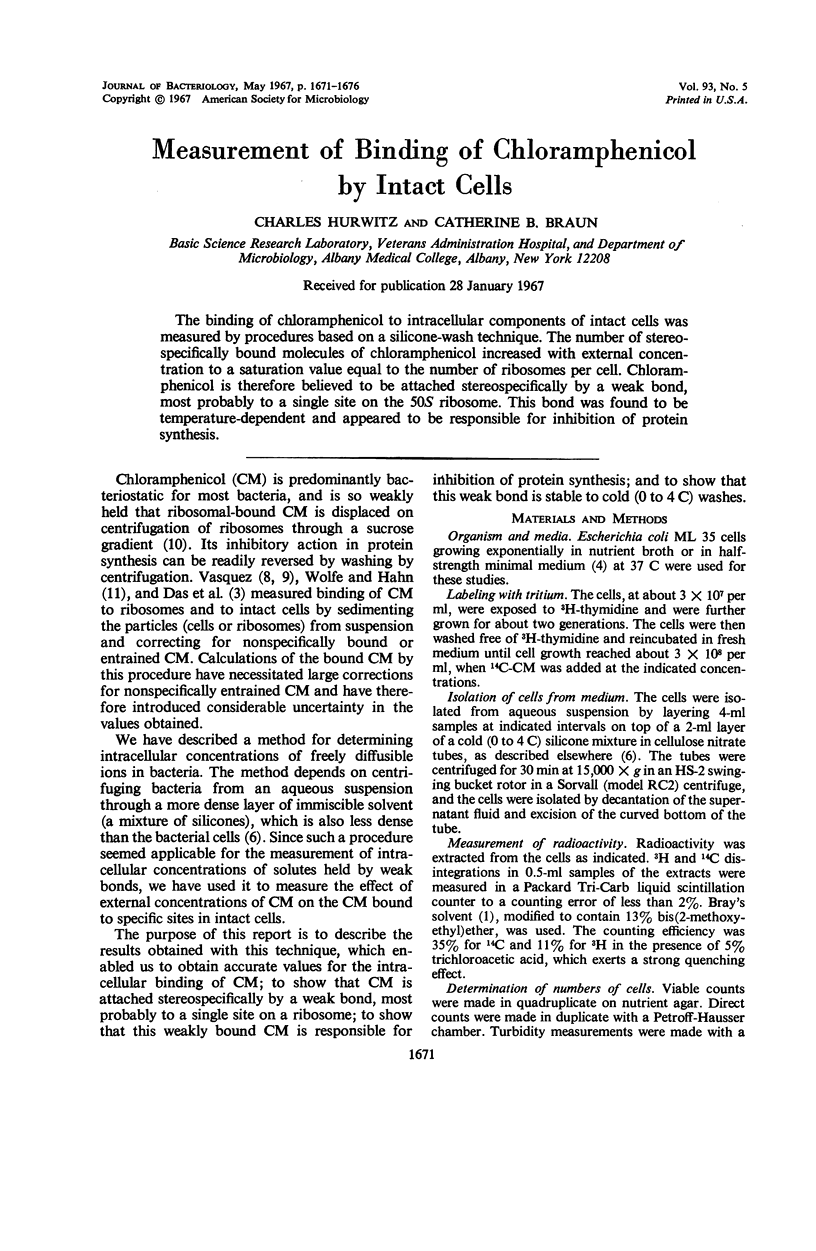

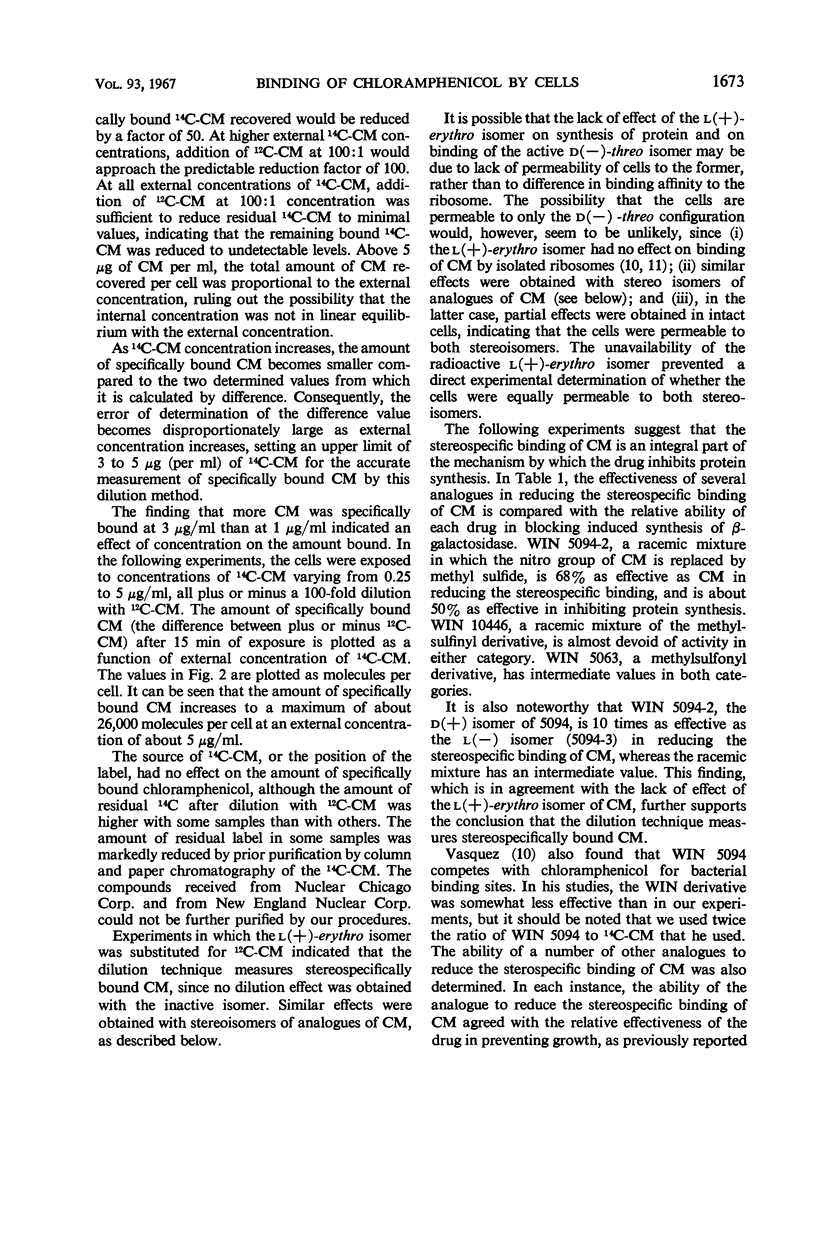
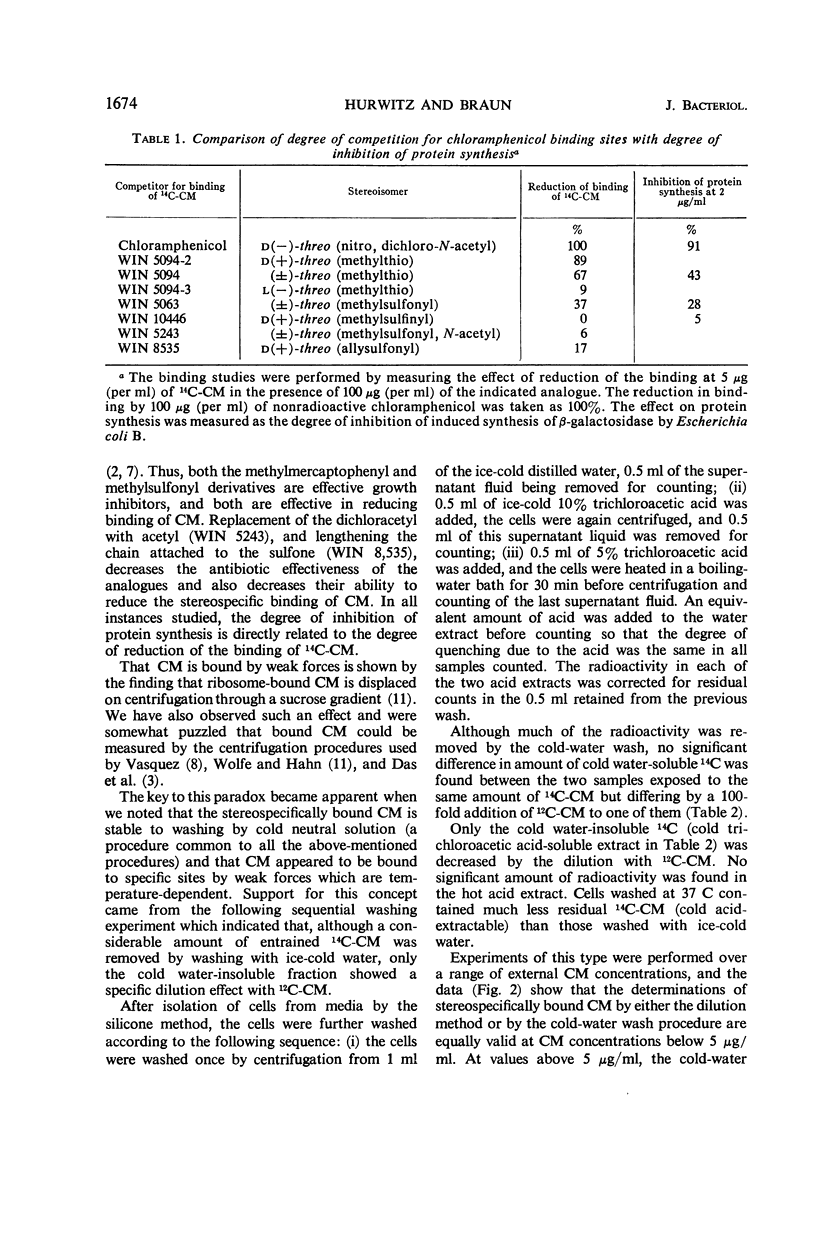
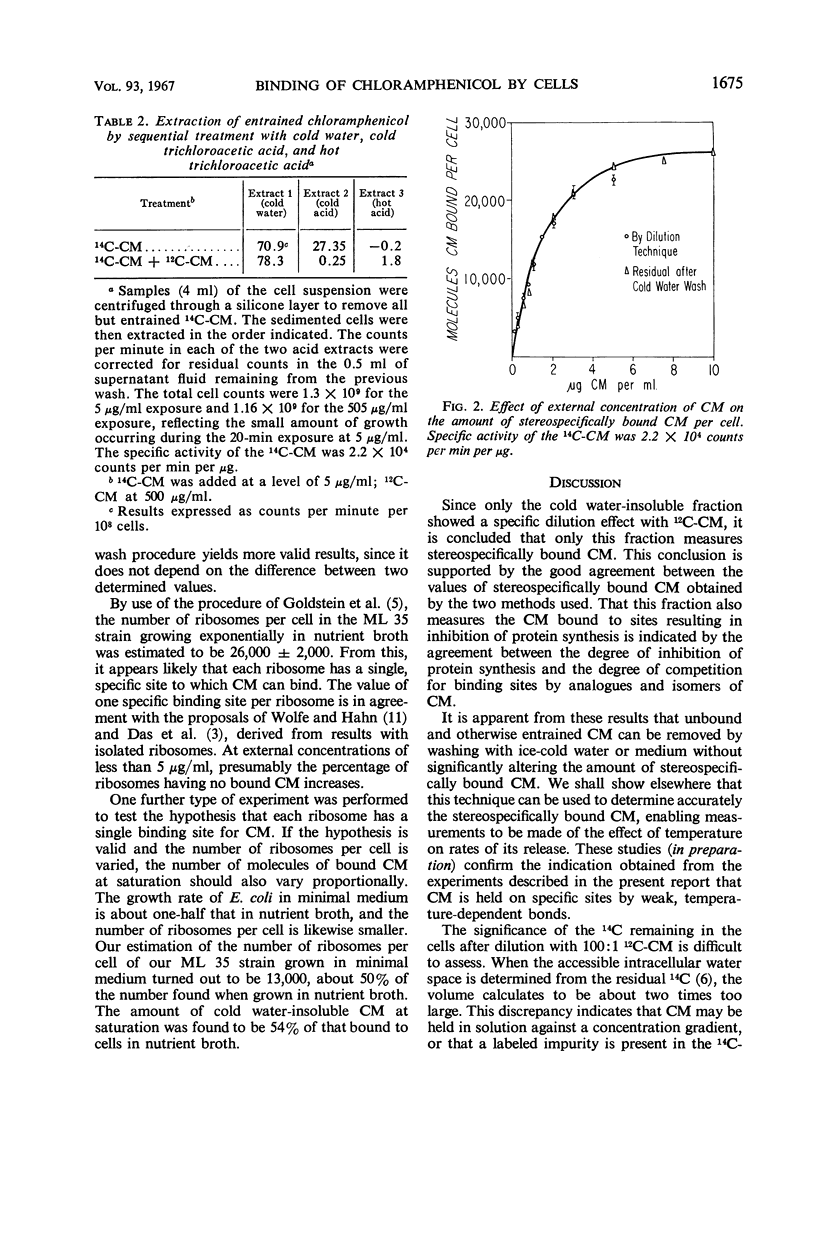
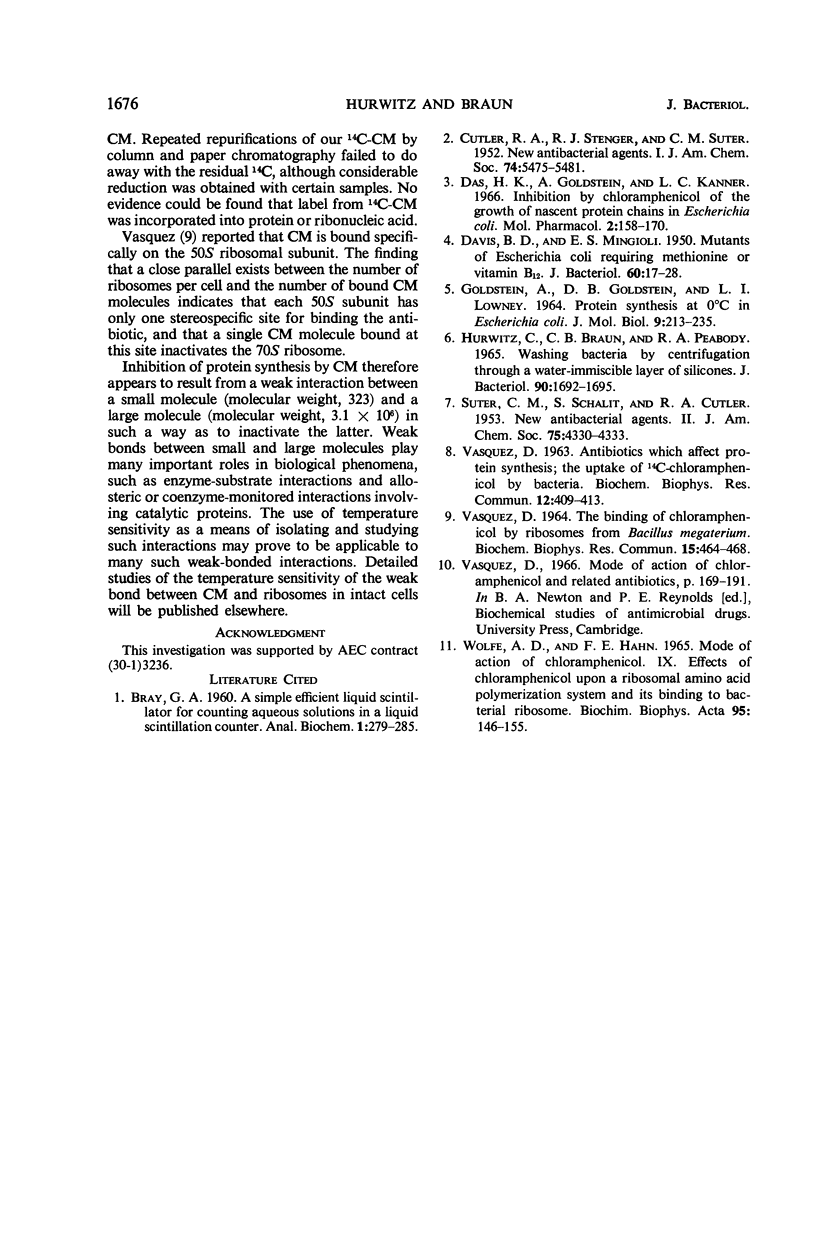
Selected References
These references are in PubMed. This may not be the complete list of references from this article.
- DAVIS B. D., MINGIOLI E. S. Mutants of Escherichia coli requiring methionine or vitamin B12. J Bacteriol. 1950 Jul;60(1):17–28. doi: 10.1128/jb.60.1.17-28.1950. [DOI] [PMC free article] [PubMed] [Google Scholar]
- Das H. K., Goldstein A., Kanner L. C. Inhibition by chlorampenicol of the growth of nascent protein chains in Escherichia coli. Mol Pharmacol. 1966 Mar;2(2):158–170. [PubMed] [Google Scholar]
- GOLDSTEIN A., GOLDSTEIN D. B., LOWNEY L. I. PROTEIN SYNTHESIS OF 0 DEGREES C IN ESCHERICHIA COLI. J Mol Biol. 1964 Jul;9:213–235. doi: 10.1016/s0022-2836(64)80102-9. [DOI] [PubMed] [Google Scholar]
- Hurwitz C., Braun C. B., Peabody R. A. Washing bacteria by centrifugation through a water-immiscible layer of silicones. J Bacteriol. 1965 Dec;90(6):1692–1695. doi: 10.1128/jb.90.6.1692-1695.1965. [DOI] [PMC free article] [PubMed] [Google Scholar]
- VAZQUEZ D. ANTIBIOTICS WHICH AFFECT PROTEIN SYNTHESIS: THE UPTAKE OF 14C-CHLORAMPHENICOL BY BACTERIA. Biochem Biophys Res Commun. 1963 Aug 14;12:409–413. doi: 10.1016/0006-291x(63)90115-3. [DOI] [PubMed] [Google Scholar]
- Vazquez D. The binding of chloramphenicol by ribosomes from Bacillus megaterium. Biochem Biophys Res Commun. 1964 Apr 22;15(5):464–468. doi: 10.1016/0006-291x(64)90487-5. [DOI] [PubMed] [Google Scholar]
- WOLFE A. D., HAHN F. E. MODE OF ACTION OF CHLORAMPHENICOL. IX. EFFECTS OF CHLORAMPHENICOL UPON A RIBOSOMAL AMINO ACID POLYMERIZATION SYSTEM AND ITS BINDING TO BACTERIAL RIBOSOME. Biochim Biophys Acta. 1965 Jan 11;95:146–155. doi: 10.1016/0005-2787(65)90219-4. [DOI] [PubMed] [Google Scholar]


